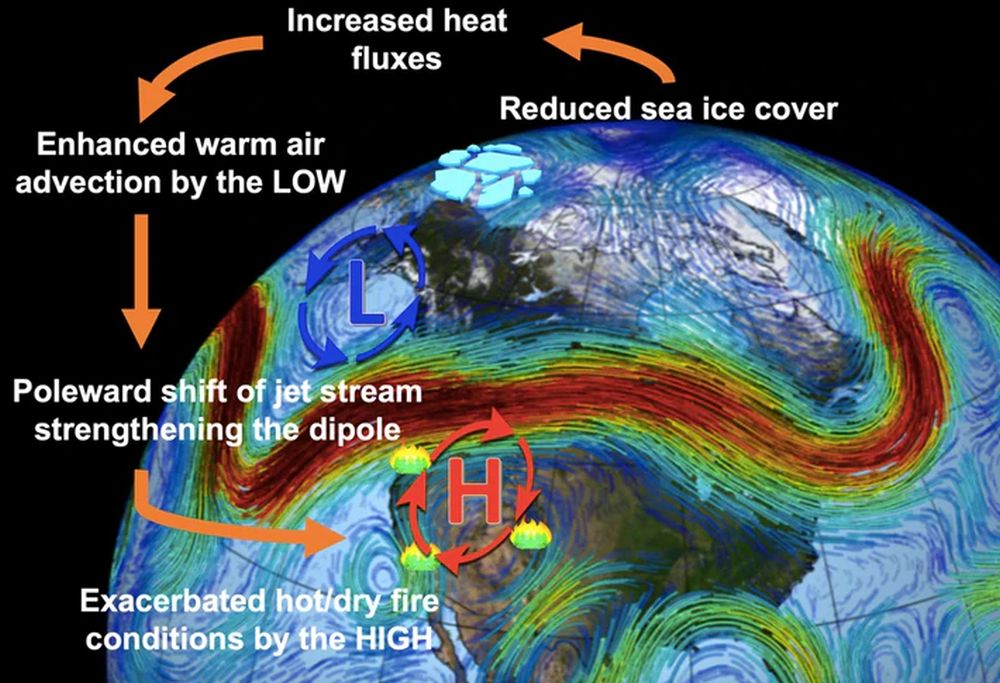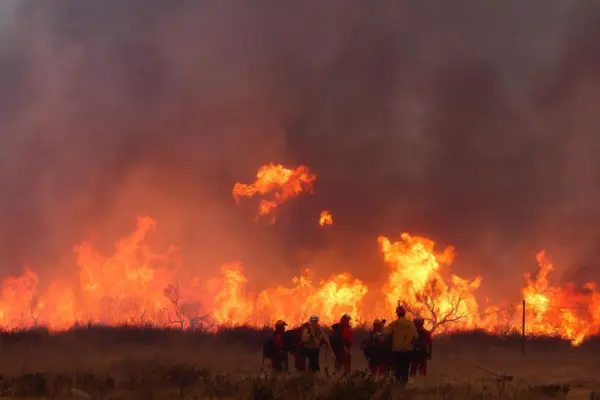Scientists Find Astonishing Relation Between Arctic Sea Ice Loss and California Wildfires
Long-distance co-relation between the two profoundly different regions could be one of the reasons behind high-altitude climate change in the Arctic affecting the lower latitude regions like the western U.S.
Climate change has always been an alarming issue of all time but in recent years, cases of the climate crisis have risen drastically. For almost more than a decade, Arctic ice has been declining at a rapid pace. Surprisingly, scientists have found a link between Arctic sea ice loss and California wildfires 2021.
As suggested by some climate project scientists, the Arctic ice may disappear completely by 2050. Simultaneously, the cases of wildfires in California, Oregon, and Colorado are likely to exacerbate over time. While the West Coast of the United States is around 1,455 miles away from the Arctic, new research suggests they are connected by thick waves of air circulation.

Image: NASA
As per the theorization of some climate scientists, the vigorous and long-distance co-relation between the two profoundly different regions could be one of the reasons behind high-altitude climate change in the Arctic affecting the lower latitude regions like the western U.S., which worsens the climate crisis even more.
In one of the studies published in the journal Nature Communications, a physical mechanism was described, which validates the reasoning for the decline in Arctic sea ice linked with the alterations in downstream air circulation patterns. The whole mechanism might result in hotter and drier weather conditions amplifying the range of large wildfires over the regions of the western U.S.
Co-author Hailong Wang, an earth systems analysis & modeling earth scientist at the Pacific Northwest National Laboratory said;
There are many other natural factors that could cause wildfires such as fuel aridity or the ignition of dry vegetation and dead trees, but we now understand how the reduction in Arctic sea ice could affect local atmospheric conditions in low latitude regions where the majority of the population lives.
After conducting numerous model mockups on Arctic sea ice concentrations, wildfire occurring and weather conditions, scientists were able to analyze the relationship between these factors. As per their analysis, every year enormous Arctic sea ice loss is observed from July to October.
The depletion of ice sea cover results in a high heat allocation into the troposphere or lowest layer of the atmosphere over Arctic regions including Alaska that allows warm air to be transported from the ocean to the regions of western U.S.
These intensified warm air flows might aggravate hot or dry conditions causing devastating fire risks. Therefore, some strict rules and regulations are required to balance out the upshots of the climate crisis.
Via: Inverse


